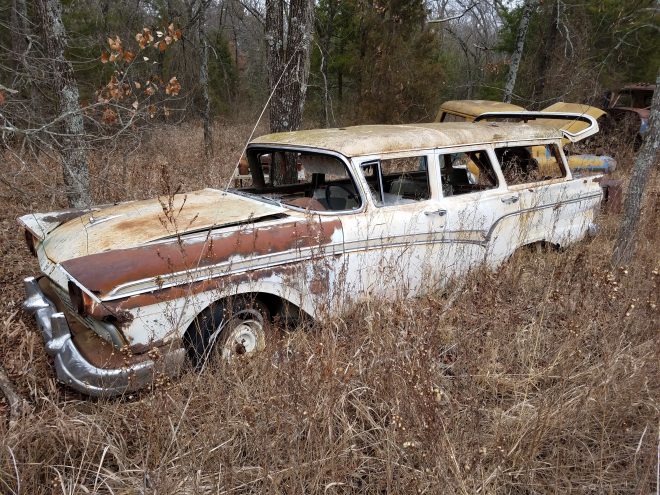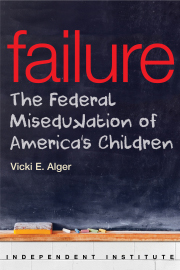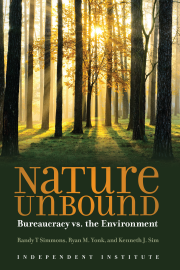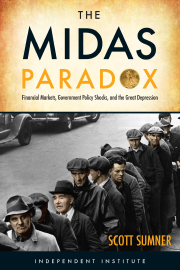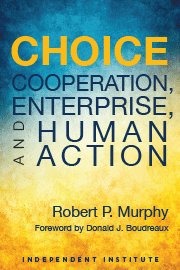Gulf and East Coast labor and economic policies drive port activity up to West Coast levels
Scott Beyer • Thursday, October 6, 2022 •
The rise of trade over the last few decades between the U.S. and Asia—particularly China—has been great for our ports. Activity has spiked in recent years, with local consumption from the sector increasing from $1.1 trillion to $1.4 trillion in 2018. But growth across ports has not been equal—it is generally higher on the East and Gulf Coast, and lower on the West Coast.
This is odd, since West Coast ports have a straight shot to China. It speaks to the difference in business climates, with the West Coast having tougher labor policy and more hostility to economic growth.
James Bennett’s New Book on the Development of America’s System of Roads
Randall G. Holcombe • Wednesday, October 5, 2022 •
James Bennett’s new book, Highway Heist, offers readers an excellent history of the politics and economics behind the development of the nation’s transportation network. When one reflects on the many activities undertaken by the government, the nation’s network of roads looks like one of the more productive government activities. Yet Bennett shows that the construction of roads has often been controversial and that interest group politics has played a significant role in determining whether they would be built and where they would go.
Readers interested in infrastructure issues will find the book very informative. Bennett offers readers a rich historical background, even going back to the nation’s founding. The book is loaded with facts and case studies. While a book on infrastructure could be dry reading, Bennett is a good writer who will engage readers. The text reads like a good story.
K. Lloyd Billingsley • Tuesday, October 4, 2022 •
The State Department has a new appointee. Secretary of State Antony Blinken has:
Designated Monica P. Medina as the United States’ Special Envoy for Biodiversity and Water Resources, signaling the Biden-Harris Administration’s commitment to resolving the world’s intertwined biodiversity and water crises. Monica Medina is the Assistant Secretary of State for Oceans and International Environmental and Scientific Affairs and will take on the Special Envoy designation in addition to her current duties.
With monumental tasks like that, people might wonder about the special envoy’s qualifications.
Craig Eyermann • Monday, October 3, 2022 •
They say a picture is worth a thousand words. When it comes to President Biden’s spending and its impact on the national debt, the Committee for Responsible Federal Budget has a picture that tells a terrifying tale:
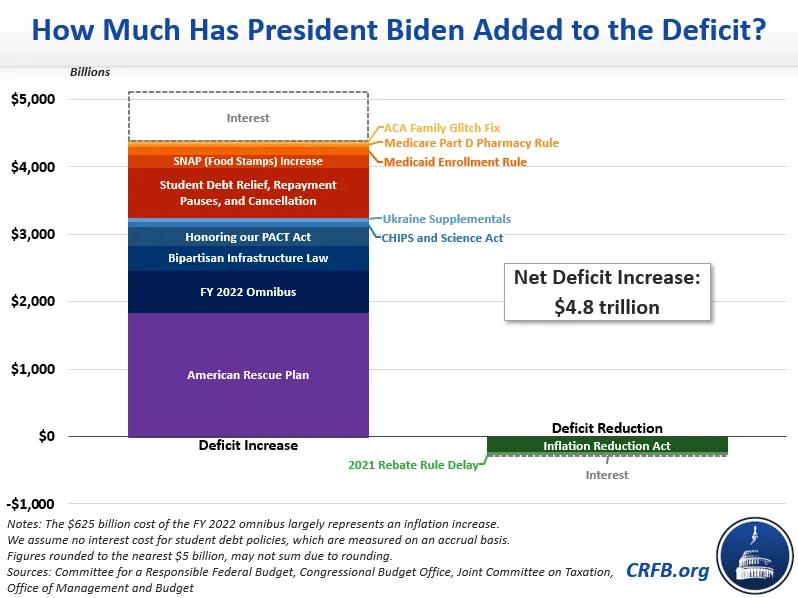
K. Lloyd Billingsley • Friday, September 30, 2022 •
“While Dr. Fauci has been a government bureaucrat for more than 55 years, his household net worth skyrocketed during the pandemic,” OpenTheBooks CEO Adam Andrzejewski told Fox News. “Fauci’s soaring net worth was based on career-end salary spiking, lucrative cash prizes awarded by non-profit organizations around the world and an ever-larger investment portfolio.”
Dr. Fauci and his wife Christine Grady, head of bioethics at the National Institutes of Health, saw their net worth expand from $7.5 million in 2019 to $12.6 million at the end of 2021. That marks an increase of $5 million, from investment gains, awards, compensation, and royalties. OpenTheBooks had to file four lawsuits to gain the information.
K. Lloyd Billingsley • Thursday, September 29, 2022 •
Railroad workers recently agreed to a contract that raises wages 24 percent over five years, with an average immediate payout of $11,000 and an extra paid day off. That is good news for workers struggling with inflation, but Federal Reserve Chairman Jerome Powell doesn’t think so.
“You had said that Americans and business need to feel some economic pain as we go forward,” Fox Business reporter Edward Lawrence asked Powell in a September 21 press conference. “How long from here should Americans be prepared for economic pain?”
Alvaro Vargas Llosa • Wednesday, September 28, 2022 •
The recently released inflation figures for August should give pause to those who keep touting isolated pieces of data to claim that things are improving and that the Fed will no longer need to raise interest rates to stem the inflationary price trend. The CPI came in at 8.3% for August (and the 16% trimmed-mean CPI, which removes short-term fluctuations, came in at 7.2%, the highest figure since they started publishing it).
If you consider how far the Federal funds rate is from those figures, at currently 2.5%, you get an idea of how much higher the monetary authorities will have to go before they begin to tame the beast. Even that will not be enough, because as history shows inflation takes a while to subside in people’s psychology even after the right policies and decisions are adopted.
A Residential “Right to Build” Amendment to the State Constitution Is Needed
Lawrence J. McQuillan • Tuesday, September 27, 2022 •
The housing crisis in California is well documented (see, for example, my report How to Restore the California Dream). Perhaps nowhere is the crisis worse than in San Francisco. Two recent incidents reveal how political gamesmanship in San Francisco deepens the crisis by making it impossible to build housing quickly and affordably.
Brookfield Properties wants to build 2,930 residential units at San Francisco’s Stonestown Galleria mall. After years of community input, Brookfield submitted its proposal to the city’s planning department in December 2021.
Fiscal Policy in the Wake of Rising Rates
Craig Eyermann • Monday, September 26, 2022 •
The Peter G. Peterson Foundation is a think tank focusing on fiscal challenges to America’s future. To that end, the Foundation invites experts from across the political spectrum to contribute their insights about the challenges the U.S. faces from its fiscal policies. Specifically, they’ve asked them to answer two questions:
- What is the impact of inflation and rising interest rates on our nation’s fiscal outlook?
- How should fiscal policy be used in this period of high inflation?
Caleb S. Fuller • Friday, September 23, 2022 •
A student of mine asks about annual, mandatory car inspections. In Pennsylvania, they’re required.
In states like Kentucky or Indiana (my home state), they’re not. To my eye, the distribution of cars looks roughly the same. Yes, you’re more likely, in Indiana, to see an outlier that looks something like this:
